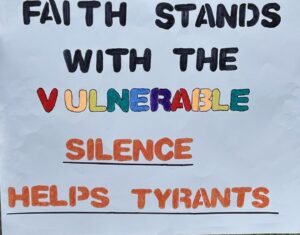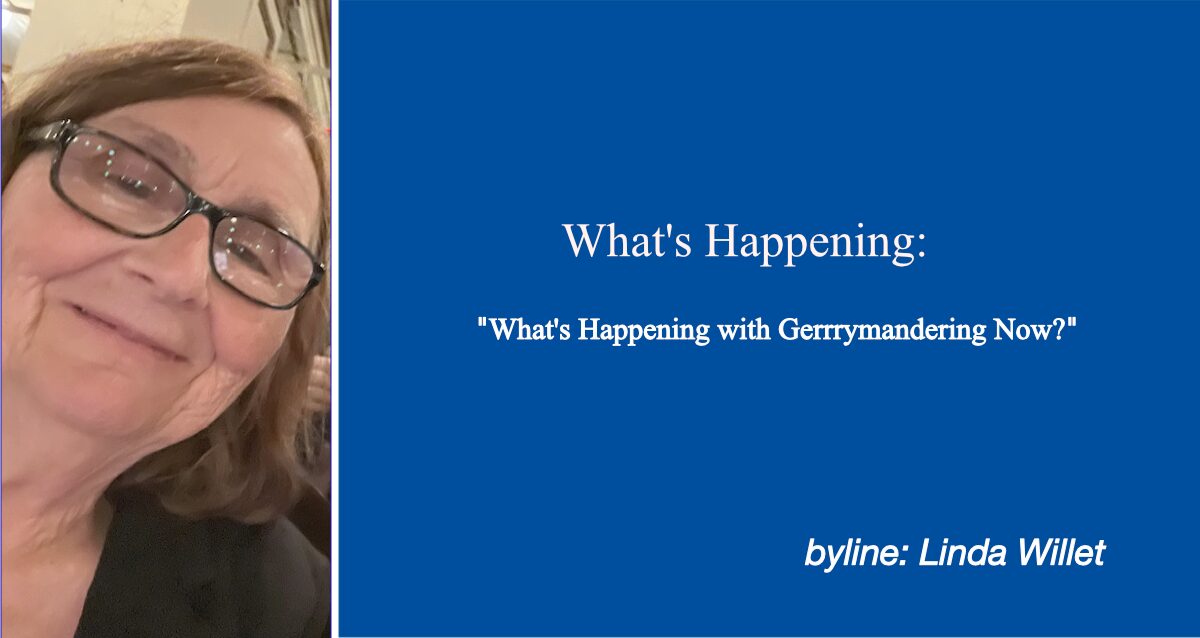Many Kane County residents became aware of the impact of gerrymandering in August 2025 when some members of the Texas legislature came to St. Charles, Illinois, to stop the redistricting vote in the Texas legislature. A few members of the delegation shared their story over Zoom at the Kane County Democratic Women’s meeting.

All of the speakers were women except for Dr. Lalani Suleman who was the last speaker. Josey Garcia, a combat veteran, began by talking about how people’s rights to representation would be violated if the redistricting vote in Texas took place and lines were gerrymandered to lessen minority votes so only Republicans could win. Gerrymandering is drawing maps to concentrate voters who lean a certain way in a few districts and spreading out most voters who lean that same way in districts where they are significantly outnumbered. Wikipedia defines it as “the political manipulation of electoral district boundaries to advantage a party, group, or socioeconomic class within the constituency.”
What triggered the redistricting vote in Texas? In August, 2025, President Trump asked Republicans in the Texas legislature to “draw five more congressional seats for the GOP” before the 2026 elections. Leaders in seven other states (both Democratic and Republican) were alarmed by this action and said they were considering changing their political maps before the election. However, some of these states have independent redistricting commissions, which do not favor either party, and these commissions would have to be changed. States with independent commissions are Arizona, California, Colorado, Idaho, Michigan, Montana, and Washington. Other states use a hybrid model or have laws that require additional steps in a short period of time or a change to the state’s Constitution. All states need to be in compliance with the Voting Rights Act and the U.S. Constitution to make these changes. This explains the current attack to strike out parts of the Voting Rights Act.
Texas and Missouri have already pushed through new gerrymandered maps, but these are being challenged in court. And a few days ago, the North Carolina legislature passed a GOP gerrymander, which could take away one Democratic seat. N.C. was evenly split between Democrats and Republicans two years ago, but the Republican-dominated N.C. Supreme Court made gerrymandering legal, which has angered the public who protested against the recent gerrymander vote with the chant, “Racist maps make racist reps.” Voters and pro-democracy groups in North Carolina are filing an appeal in federal court, accusing lawmakers of violating both the U.S. Constitution and the Voting Rights Act since there were no population shifts or court-ordered redraws. Deborah Dicks Maxwell, President of the NAACP NC State Conference stated that “Lawmakers used their power to silence Black voters who dared to speak through the ballot box.” In the 2024 election, voters in Congressional District 1 overwhelmingly voted for Rep. Don Davis and Presidential candidate Kamala Harris. The gerrymandered map splits Black voters between Districts 1 and 3 where their votes will be neutralized.
Other Republican-dominated legislatures that are considering redistricting are Florida, Indiana, Kansas, Utah, Ohio, and Louisiana. In response, a few states with Democratic majorities are considering special elections to vote on redistricting or changes to their Constitutions. These states include Maryland, Illinois, California, Virginia, and New York. On November 4th, California voters can vote yes or no on Proposition 50, which some people call the Election Rigging Response Act. Voting yes would allow the state to use “temporary new maps” to counter Trump’s plan to rig the midterm elections. And on October 20th, Hakeem Jeffries met with Congressional Democrats to encourage them to redraw the Illinois congressional maps to counteract what is happening in Republican-controlled legislatures throughout the country and possibly gain one more Democratic seat. Congressional districts that could be affected are the 16th, 2nd, and 1st. Illinois State Representative Jonathon Jackson, who represents the 1st District, said, “We are committed to working together to make sure we can take a majority back. This is the only path forward for the democratic party and to save the nation.”
Normally, redistricting takes place every 10 years following the census so that changes in population are reflected. Then maps are drawn that give voters the opportunity to elect candidates who fairly represent their communities’ interests and values. However, redistricting also provides an opportunity for people with power to create maps that provide an unfair advantage to some parties and candidates. As we all know, corruption has existed since the beginning of our country, but in 2019, the Supreme Court ruled that “gerrymandered maps can’t be challenged in federal court.” This opened the door to unprecedented corruption and partisan politics, which we are witnessing in today’s political climate. And citizens who want fair elections are even more concerned that the Supreme Court will strike down Section 2 of the Voting Rights Act, which makes racial gerrymandering illegal.
That leaves us with the big question? Can the Democrats possibly win either the House or Senate in the 2026 midterm election? The seven million people that showed up for No Kings Day on Saturday, October 18th, believe that we can. And that number doesn’t include people who were unable to be at the rallies because of work commitments, childcare concerns, health, and disabilities. More people are showing up at rallies and political meetings and expressing concern about what is happening in their communities and states. And more people are volunteering to help members of their community who feel threatened by ICE.
In a recent radio broadcast on WCPT 820, a caller asked Thom Hartmann the big question about the 2026 midterms and expressed fear that the U.S. Supreme Court was going to be the downfall of the nation. Thom informed the caller that Congress can limit the Supreme Court’s power in several ways. It can limit the Court’s appellate jurisdiction through the Exceptions Clause, but Congress cannot violate the separation of powers. Congress can also change the number of justices on the Supreme Court and change the structure of the court by setting up or abolishing federal courts. And Congress can impeach and remove Supreme Court justices. Hartman finished by saying he thinks we can win, but we need to get our message out and educate everyone about what is happening in our country. Start with the neighbor next door.
It’s up to us to save America, and it will take all of us working together. Nicole Collier, one of the Texas legislators who spoke to the Kane County Democratic Women in August, emphasized that August 6, 2025, was the 60th anniversary of the Voting Rights Act of 1965, which was signed into law by President Lyndon Baines Johnson. She said that if the Republicans are allowed to steal the rights of people to be fairly represented, our country will slide even closer to becoming like Russia or China where the votes of “the people” mean nothing. We must speak up and call out the injustice that is happening. And we must continue to rally and educate our neighbors. Last weekend, I saw a sign that said, “Faith Stands with the Vulnerable. Silence Helps Tyrants.” Let Your Voices Ring Out Loud and Clear. As we say at the rallies, “This Is What Democracy Looks Like!!!
Resources Used in This Article
www.amacad.org. “State Legislative Update: Independent Citizen-Redistricting Commissions,” April 29, 2025.
democracydocket.com, “North Carolina Senate Approves Gerrymander Targeting Black Voters,” Oct. 21, 2025.
pbs.org, “The Fight to Redraw U.S. House Maps Is Spreading,” Sep. 29, 2025.
lao.ca.gov, “Proposition 59”
www.brennancenter.org. “Gerrymandering Explained,” Aug. 10, 2021.
www.newsweek.com. “Supreme Court Could Have Major Impact on Midterm Elections,” Sep. 23, 2025.
www.newsnationnow.com. “Hakeem Jeffries Pushes for Illinois Congressional Map Redraw, “Oct. 28, 2025.

